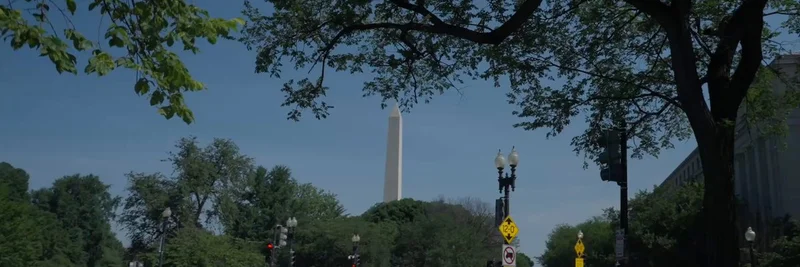Reserve Protocol's Insights on Monetarium 2 and Tokenized Real-World Assets
On June 30, 2025, Reserve Protocol shared a thought-provoking post on X (formerly Twitter) about their recent event, Monetarium 2. This event, featuring insights from Neuvin, delved into critical topics such as fixing the fiat system, exploring post-dollar alternatives, and Reserve's pivotal role in preparing for a future dominated by tokenized real-world assets (RWAs). Let's break down the key points and understand their significance.
What is Monetarium 2?
Monetarium 2 is an event organized by Reserve Protocol, focusing on the evolution of financial systems and the integration of blockchain technology. The event featured a discussion led by Neuvin, covering two main plans:
- Plan A: Addressing the current issues within the fiat system and proposing solutions to stabilize and improve it.
- Plan B: Exploring alternatives to the dollar-dominated financial system, emphasizing the potential of decentralized finance (DeFi) and tokenized assets.
The full video of the event is available for those interested in a deeper dive into these topics. You can watch it here.
Fixing the Fiat System
The fiat system, which relies on government-issued currency not backed by a physical commodity, has been the backbone of global finance for decades. However, it faces numerous challenges, including inflation, currency devaluation, and lack of transparency. Reserve Protocol's discussion at Monetarium 2 highlighted the need for innovative solutions to these problems.
One of the key proposals is the use of stablecoins, which are cryptocurrencies designed to maintain a stable value relative to a specific asset, such as the US dollar. Reserve Protocol's approach involves creating decentralized token folios (DTFs), which are permissionless, tokenized indexes that make the financial system more accessible. This democratization of finance aims to reduce reliance on traditional banking systems and empower individuals with greater control over their assets.
Post-Dollar Alternatives
As the dominance of the US dollar in global finance comes under scrutiny, the search for viable alternatives intensifies. Monetarium 2 explored several post-dollar scenarios, including the rise of digital currencies and the tokenization of real-world assets. Tokenized RWAs, such as real estate, art, and commodities, can be fractionalized and traded on blockchain platforms, offering new investment opportunities and liquidity.
Reserve Protocol's role in this transition is significant. By leveraging blockchain technology, they aim to create a more inclusive and efficient financial ecosystem. The tokenization process involves dividing physical assets into digital tokens, which can then be bought, sold, or traded on decentralized platforms. This not only enhances liquidity but also reduces the barriers to entry for investors.
The Role of Real-World Asset Tokenization
Tokenized real-world assets are at the forefront of financial innovation. They allow for the fractional ownership of high-value assets, making them accessible to a broader audience. For instance, instead of needing millions to invest in a piece of real estate, investors can buy tokens representing a small fraction of the property. This democratization of investment is a game-changer.
The process of tokenizing RWAs involves several steps:
- Division of Assets: The asset is divided into fractional shares.
- Tokenization: These fractions are converted into digital tokens on a blockchain platform.
- Verification: The ownership and value of the asset are verified, often using protocols like Chainlink's Proof of Reserve.
- Distribution: The tokens are then distributed and made available for trading.
This approach not only increases liquidity but also opens up new revenue streams for asset owners. However, it also comes with challenges, such as ensuring security, maintaining interoperability, and addressing liquidity risks.
Reserve Protocol's Technological Edge
Reserve Protocol's technology is designed to mitigate the risks associated with tokenized assets. Their Yield Protocol and Index Protocol have undergone rigorous testing and independent audits to ensure robustness and security. These protocols are crucial for maintaining the integrity of DTFs and protecting users from potential exploits.
Despite the advancements, the space is not without risks. Smart contract bugs, governance attacks, and front-end vulnerabilities remain concerns. Reserve Protocol's commitment to continuous improvement and transparency is vital in building trust within the community.
Community Reactions
The post on X sparked a range of reactions from the community. Some users expressed optimism about the potential of $RSR, Reserve Protocol's native token, with predictions of significant price increases. Others highlighted the need for better marketing and outreach to expand the protocol's influence.
Conclusion
Reserve Protocol's discussion at Monetarium 2 offers a glimpse into the future of finance, where tokenized real-world assets and decentralized systems play a central role. As we move towards a more digital and inclusive financial landscape, the insights from this event are invaluable for blockchain practitioners and investors alike.
For those interested in staying updated on the latest developments in meme tokens and blockchain technology, Meme Insider provides a comprehensive knowledge base and news platform. Join us in exploring the evolving world of digital finance and meme culture.
Stay tuned for more insights and analyses on Meme Insider.



